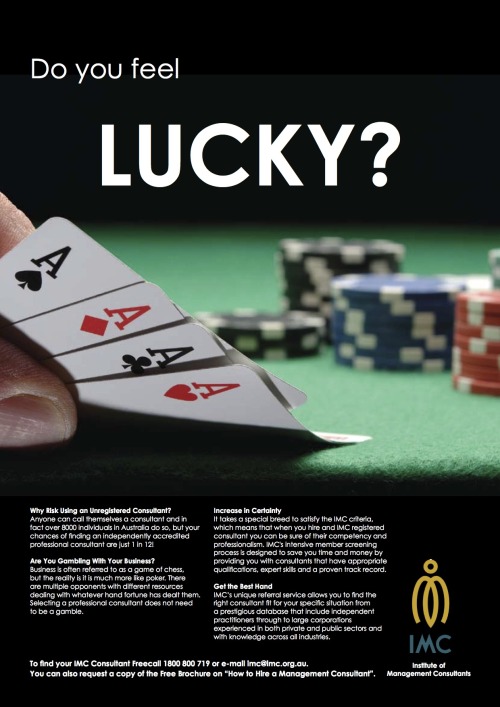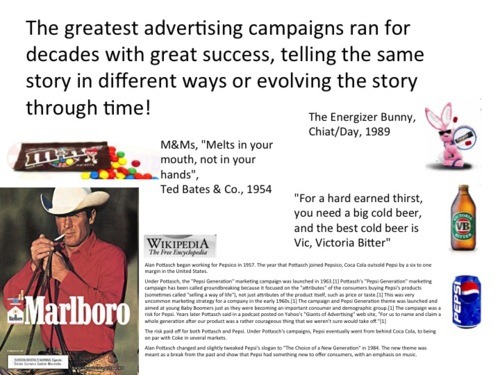by admin | Jan 30, 2012 | Blog, Promotion
WHERE ARE YOU SAYING IT?
Where are you communicating with your customers and prospects? Where can you reach them most cost effectively? What are they reading, listening to and watching?
You need to invest wisely and and measure your results by capturing responses to as many of your communication initiatives as possible.
Here are a few rules of thumb for your marketing tactics:
- Budget (Marketing as a rule of thumb is 10% of Sales)
- Media or cost of reaching the customer is about 75% of the Total Marketing Budget
- Reach (most small businesses try to talk with too many prospects / customers)
- Frequency (most small businesses do not repeat their message frequently enough) 100 customer x 10 times is better than 1,000 customers x 1
- Continuity is important (most small businesses do not pursue the dialog for long enough! Rather than appear in 3 editions of the magazine or newspaper with a Full Page advertisement choose to appear in 6 editions with a half page advertisement. The same applies to digital media)
- Media should drive the messageE.g.. Do not make the mistake of producing 5,000 Brochures, first and then ask how will you get them into the hands of your customers and prospects!
- Just because you can get a great deal from the media (of any type) it doesn’t mean it is right for your business. Here are just a few examples of a lack of media planning:
- Why is 2 Office Medical Centre on TV? Especially when there was no point of difference or area of specialty mentioned during the ads.
- Why is a “general brand ad” for a Shopping Center on Radio? Again, as the advertisement on the radio would have reached the entire metropolitan area, this shopping center gave no reason why someone other than those in the immediate geographic catchment would bother getting in their cars and traveling substantial distances.
- Why is a large B2B industrial company on Radio? Have they exhausted all other possibilities? I doubt it. Online Marketing, Social Media, Direct Mail, and the list goes on.
These media choices may have all seemed like great ideas to these small and sometimes large business owners, but that doesn’t make them right. These media choices may have been affordable but were still wrong!
In the 3 examples above each of these businesses has a very specific target market. This specificity is due to either their geographic location or their niche B2B Audience.
Their ‘mass media’ choice will not only produce massive amounts of wastage but is unlikely to deliver the best marketing return on their investment.

by admin | Jan 26, 2012 | Blog

Creative Theme – Gambling
A Gambling theme was used for a management consulting member organisation to communicate with both prospective members and encourage membership and potential clients, with the main messages being:
- don’t gamble with your career / business
- get the unfair advantage
by admin | Jan 20, 2012 | Blog, Promotion, Strategy
To develop an effective creative theme, your brand positioning needs to be different from what is prevalent in your industry segment. One way of doing this is staying away from standard photography stock photos. Not only will this not provide your business with the necessary point of difference but will play into the hands of the category leader, who is most likely already using the “typical” stock shots.
Here are some examples of effectively used creative themes:
A Gambling theme was used for a management consulting member organisation to communicate with both prospective members and encourage membership and potential clients, with the main messages being:
- don’t gamble with your career / business
- get the unfair advantage
A Cartoon theme for an accounting practice and a different cartoon theme for a management consulting firm both poking fun at their own practice were used to differentiate these companies from their competition that uses traditional and boring “corporate” photos of “smiling people in the office”
A visual Illusion theme for a marketing consultancy was used to deliver the message that things aren’t always what they seem and that Perception is Reality!
A theme of the world’s most famous Man-Made Landmarks was developed for a translation company to differentiate them and make their offer more memorable than their competitors.
A Car theme was designed for a web marketing company that was at the time an early developer of an easy to use web Content Management System:
- the brochure looked like a car brochure with all of the “driving analogies” being used to appeal to the mainly middle aged male business audience
- direct mail campaign using a “test drive” invitation, with keys and one pair of a glove, etc
- a user manual that resembled closely a car manual
- a license for clients completing the training course
A Medical theme was developed for an I.T. company. Most I.T. companies can’t get beyond the now “typical” I.T. Health Check. This I.T. company was able to develop a campaignable and timeless theme which was intrinsically linked to its Positioning Statement / slogan which was “taking care of I.T.”
- Mints in a medicine bottle could be used as promotional items for “pain relief”
- Different levels of I.T. Support were marketed like health insurance
- Invoices could be made to look like medical scripts
- Client files and proposals could be made to look like medical patient histories.
- Staff could dress up as doctors
Wild West theme was used by a design firm, with all the shoot outs, outlaws, sheriff and wanted posters to create a fun approach to selling this firm’s point of difference.
As you can see the creative theme for your business is only limited by your imagination. From police or detectives, to aliens and UFO’s, from tailoring to sailing, from army to mythology, the critical things to remember are:
- Making sure that your creative theme is clearly communicating and reinforcing either your brand name or your positioning statement
- That your creative theme is immediately comprehensible and doesn’t take too long for the prospective target audience to “get it”, otherwise you are just confusing them rather than helping them remember you and what makes you special
- Your creative theme is different to the themes being used in your industry segment
- Your creative theme provides you with a never ending well of ideas.
by admin | Jan 18, 2012 | Blog, Strategy
The creative strategy is the translation of the brand objectives and attributes, into communication that will:
Having a strong creative strategy is more important for the SME which doesn’t have the corporate budget to drum in the message using the sheer weight of media dollars. An SME is also in a better position to develop a strong creative strategy:
- Unlike a big corporate organisation, an SME does not have to deal with layers of management and political games.
- In most cases there is no brand baggage.
Creative strategy is rarely used by businesses outside the large and well established Consumer Goods and Services; from FMCG to Banking, Retail, Telecommunications, Cars, etc. B2B and Professional Services companies, and in fact most SME’s can benefit from having a Creative Strategy.
- Provides consistency which is crucial in building memorability and trust with the target audience
- Ideally, the theme is will be derived from or generate synergy with the brand name or the positioning statement.
- Allows for development of more ‘creative’ communication, which also makes it more memorable. Creative themes achieve this by developing synergy between words and graphics and thus become more memorable.This means that you do not have to expose your target audience to your message as many times as you would otherwise with ‘average’ or less interesting communication, which means you can spend less money communicating with your prospects to turn them into customers.
- Well communicated THEMES deliver greater marketing ROI because they go beyond features and benefits in the mind of the prospect and engage them emotionally as well as logically.
The more creative the communication, the more memorable and comprehensible it is. Which means that you do not have to expose your target audience to your message as many times as you would otherwise with ‘average communication’.
A consistent THEME that uses the name of the brand or its positioning or ultimately both will always yield better results in achieving the above objectives.
MORE CREATIVE = LESS FREQUENCY = GREATER ROI



Recent Comments